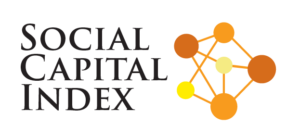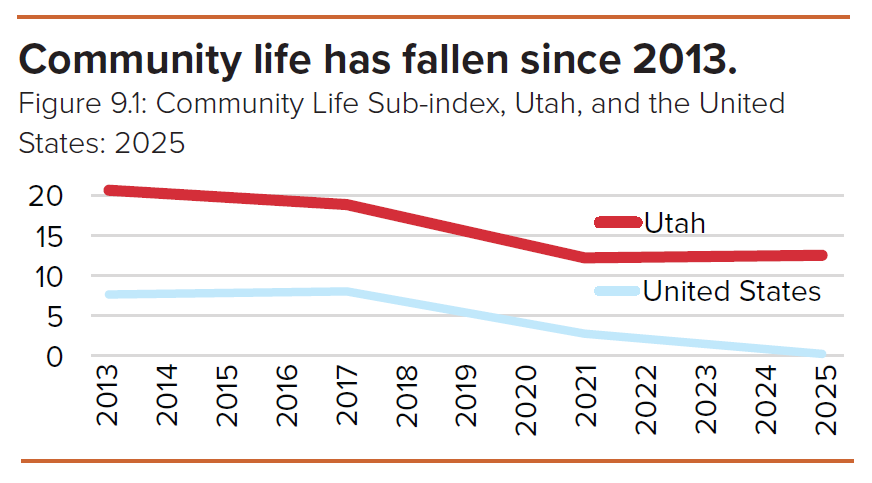The Utah Foundation’s Social Capital Index project is a series of reports that measure whether Utah is thriving in terms of its “social capital.” Put simply, social capital refers to the ways in which individuals can leverage connections between people and social networks for the benefit of themselves or their community.
One of the seven categories of the project focuses on communities. The key finding from that report is:
Utah has the highest ranking of community life in the nation.
That said, Utah’s community life index score has fallen by over 40% since 2013.
This installment in the Utah Foundation’s Social Capital Index project uses eight indicators to compare states in terms of community life:
- Charitable donations (1st in the nation)
- Volunteerism (1st)
- Religious participation (2nd)
- Neighborhood participation (1st)
- Non-professional organizations funding effort (47th)
- Professional associations funding effort (39th)
- Spending time with friends and neighbors (38th)
- Spending time alone (2nd lowest in the nation)
“Utah does very well in terms of community life,” said Shawn Teigen, President of the Utah Foundation. “We lend helping hands to our neighbors, and we volunteer. However, we are heading in the wrong direction, with rapidly decreasing levels of community life.”
Highlights of this Report
- Utah’s community life index score fell by over 40% from 2013 to 2025.
- Utah still leads the nation in terms of community life – and it isn’t even close. Utah is almost twice that of the next nearest state.
- Utah is first or second in the nation on five of the eight indicators that make up community life.
- The nation has a community life index of 0 – a sign that the nation has seen significant decreases since its 2016 baseline. This is driven by large declines in religious participation, time spent with friends and neighbors, and an increase in time spent alone.




